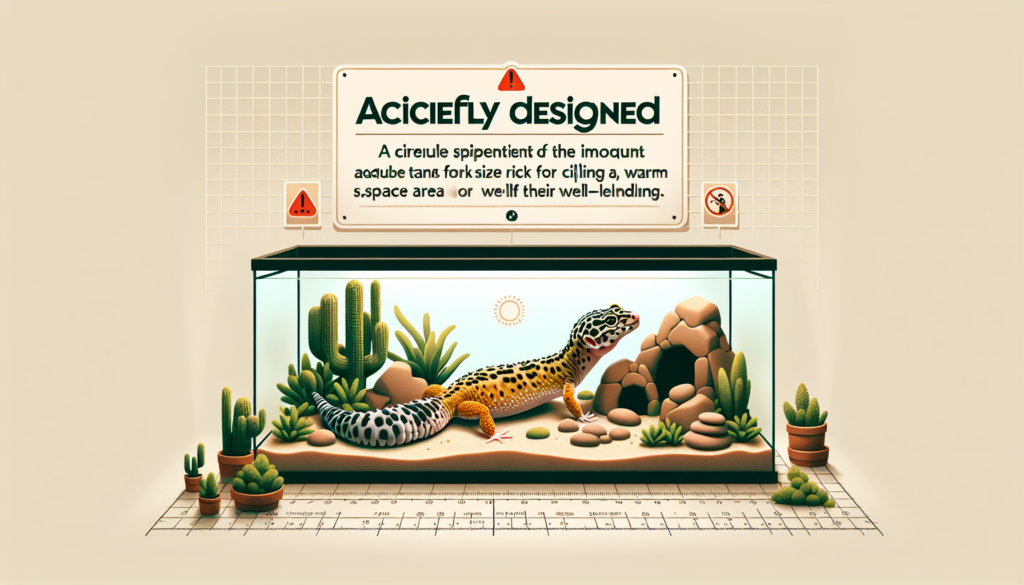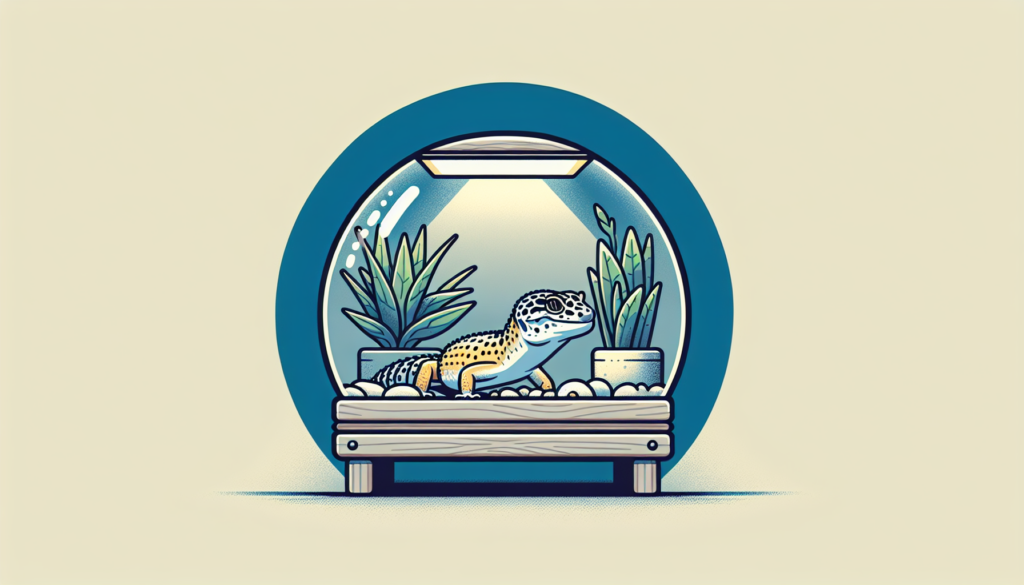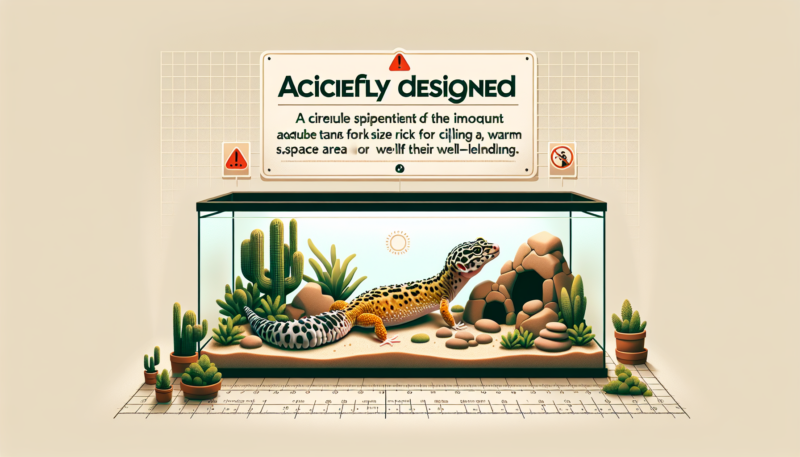Looking to provide the perfect habitat for your leopard gecko? Then knowledge of proper tank size is key. When it comes to your scaly friend’s living space, size matters. In this article, we’ll explore the importance of leopard gecko tank size and how it directly impacts their overall well-being. So, grab your measuring tape and get ready to create a comfortable and spacious home for your gecko companion.
Leopard Gecko Tank Size
Choosing the right tank size for your leopard gecko
When it comes to setting up the perfect habitat for your leopard gecko, one of the most important factors to consider is the size of the tank. Providing your leopard gecko with a suitable tank size is crucial for its overall health and well-being. A properly sized tank will not only ensure that your leopard gecko has enough space to move around and explore, but it will also create an environment that promotes physical and mental stimulation.
Factors to consider when determining tank size
Before settling on a specific tank size for your leopard gecko, it is important to consider some key factors. The age and size of your gecko play a significant role in determining the appropriate tank size. A young leopard gecko will require a smaller tank, while an adult gecko will need a larger space to accommodate its size.
Another factor to consider is the number of accessories and hiding spots you plan to include in the tank. Leopard geckos are known for their love of hiding and exploring, so providing an adequate number of hiding spots, such as caves or rocks, is essential. These additions will take up space in the tank and should be taken into account when determining the overall size.

The minimum tank size for a leopard gecko
While leopard geckos may be small in size, they still require a certain amount of space to thrive. The bare minimum tank size for a leopard gecko should be a 20-gallon tank. This size will provide enough space for a single adult gecko and a few hiding spots.
The recommended tank size for a leopard gecko
If you want to ensure that your leopard gecko has plenty of room to roam and explore, it is recommended to go bigger than the minimum tank size. A 30-gallon tank is the ideal size for a single leopard gecko. This larger tank will allow your gecko to exhibit natural behaviors and provide ample space for additional accessories and hiding spots.

Tank size for multiple leopard geckos
If you have multiple leopard geckos, it is important to consider their size as well as the dynamics between the geckos. Each gecko should have enough space to establish its territory and have sufficient space for activities. For two geckos, a 40-gallon tank is recommended. As the number of geckos increases, so should the size of the tank. A larger tank will promote a harmonious living environment and reduce potential territorial issues.
Importance of providing a spacious tank for leopard geckos
Leopard geckos are active creatures, especially during their nocturnal periods. They enjoy exploring their surroundings, climbing, and even hunting for food. Providing a spacious tank allows them to engage in these natural behaviors and also helps prevent stress and boredom. Leopard geckos are solitary animals in the wild, and cramping them in a small tank can lead to physical and psychological problems.
The role of tank size in promoting physical and mental well-being
A spacious tank has numerous benefits for the overall well-being of your leopard gecko. It allows for exercise and movement, which helps to maintain a healthy weight and muscle tone. The extra space also provides opportunities for mental stimulation, as your gecko can investigate and interact with its environment. These mental exercises help prevent boredom and promote a happier and more fulfilled leopard gecko.
Effects of inadequate tank size on leopard gecko health and behavior
Failing to provide your leopard gecko with an appropriately sized tank can have detrimental effects on its health and behavior. A cramped tank restricts movement and can lead to the development of obesity or muscle atrophy. Additionally, inadequate space can result in stress and anxiety, which may manifest as aggressive or antisocial behavior. It is crucial to prioritize the well-being of your leopard gecko by giving it the space it needs to thrive.
Common problems associated with improper tank size
When leopard geckos are kept in tanks that are too small for their needs, a variety of problems can arise. These problems include difficulty shedding, as there may not be enough space for the gecko to rub against rough surfaces to aid in the shedding process. Inadequate tank size can also lead to poor thermoregulation, preventing the gecko from properly regulating its body temperature. Furthermore, cramped living conditions can contribute to an increased risk of bacterial and fungal infections due to reduced ventilation and increased moisture.
Tips for setting up an appropriate tank size for your leopard gecko
To ensure that your leopard gecko has a suitable tank size, consider the following tips:
- Research tank size recommendations based on the age and number of leopard geckos you plan to house.
- Prioritize spaciousness and create an environment that allows for ample movement and exploration.
- Provide an appropriate number of hiding spots and accessories to accommodate the gecko’s natural behaviors.
- Regularly clean and maintain the tank to uphold a healthy living environment for your leopard gecko.
- Monitor your gecko’s behavior and health closely, making adjustments to the tank size if necessary.
By following these tips, you can provide a comfortable and spacious habitat for your leopard gecko, promoting its overall health and happiness. Remember, a happy gecko is a thriving gecko!
